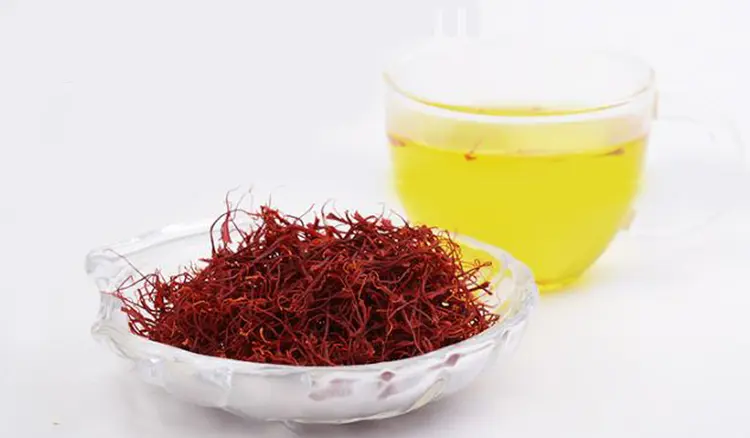Saffron, A Theurgist For Ultimate Enthusiasm
Saffron does harvest with great care and thoroughness by hand from the flower species Crocus sativus, dried and sold as one of the most expensive spice worldwide by weight.
High-quality Saffron is a bunch of long red strands that are bright red. Powdered Saffron is usually mixed with many fake fillers, so avoid them. Saffron has a spicy, little bitter taste and scent with a sweet odor. When used in excess, however, the taste can quickly feel.
Harvesting Saffron is labor-intensive, so if you want high-quality Saffron, prepare yourself for an expensive purchase. Good Saffron consists of fine, evenly sized, deep red threads with an orange tendril on one end and a trumpet-shaped flute on the other. If the tendril looks yellow, the Saffron is likely accurate but slightly poorer. A more pungent scent also indicates a more robust, better flavor. In contrast, fake Saffron may be shredded; threads are irregularly disconnected and mixed with other plant bark. The scent may be mild and usually smells like humid wood.
Saffron is one of the world's most valuable spices, and is very attentive to its miraculous healing power and medicinal properties, especially its antidepressant and aphrodisiac powerful effects around the globe. Saffron contains more than 150 productive chemicals compounds (volatile and non-volatile), including carotenoids (crocetin, crocin, β-carotene, lycopene, and zeaxanthin), monoterpene aldehydes (Picrocrocin and Safranal), monoterpenoids, and isophorone and flavonoids, vitamins, proteins, and amino acids. Good functional properties of Saffron are the presence of carotenoid derivatives, mainly preserved throughout flowering, harvesting, and stigmas gathering. These compounds include crocin, crocetin, picrocrocin, and safranal, secondary or bioactive metabolites. Saffron's quality depends on its chemical profile and is directly related to the geographic area, climate variability, environmental practices, genetic traits, soil composition, cultivation conditions, and processing and storage method.
Nevertheless, according to the ISO standards (3632-1:2011 and ISO 3632-2:2010), the quality of Saffron stigmas is dignified according to the content of the Crocin and crocetin (color components), Picrocrocin (the bitter taste component), and the volatile compounds such as safranal components (the odor and aroma). These specific parameters are influenced by the environmental conditions, extraction method, and purification. Some studies have been done on extracting Saffron bioactive compounds and revealed that the quality stability of saffron stigmas is very connected to temperature and humidity conservation area as strongly influence the ruin of the active ingredients.
Saffron is a powerful spice and has high antioxidants. It has been linked to many health and beauty benefits, such as improved mood, libido, and sexual function, altered mood, killing cancer cells, decreased swelling as well as reduced Premenstrual Syndrome (PMS) symptoms, treating eye problems, treating genitourinary and body weight loss improvement and many others benefits. Saffron includes selenium and vitamin C, which cure sperm count and motility. Drinking Saffron water first thing in the morning helps decrease sugar cravings. It also helps with premature man ejaculation by increasing testosterone levels. Saffron is also treasured and well-known for its golden color and rich, distinct flavor in foods and beverages. Adding a small amount of Saffron red stigma to specific recipes can give food a rich, spicy taste.
Saffron has been used as a costly spice, food colorant, and traditional herbal medicine in many countries, including Iran, Greece, India, Spain, Egypt, and China, from 3000 years ago. The inscriptions show that Saffron was a valuable gift for the kings of the two empires of Iran and Rome.
It's commonly safe for most people, and It is perfect always to add to the diet. Saffron is safe when taken as a medicine in doses of up to 0.1 grams per day (100 mg per day) for up to a month. Overall, occasionally Saffron using up to 1.5 grams daily is considered safe. In comparison, doses equal to or more than 5 grams may have toxic effects, and amounts equal to or more than 20 grams are possibly fatal. Clinical studies have evaluated Saffron doses ranging from 0.2 to 0.4 grams per day of pure Saffron as safe (taken by mouth). Still, for pregnant mothers, babies, and people with allergies or who have a history of certain diseases, it must be used with caution or under the advice and supervision of expert doctors. Some common side effects include drowsiness, stomach problems, and nausea or vomiting. Allergic reactions are also possible.
The best way to use Saffron is to take a tiny pinch of the strands and grind it into a fine powder using a mortar and pestle; in a bowl, add 2-3 tablespoons of hot water (or hot liquid such as broth or stock), give it a gentle stir, cover, and keep it calm for at least 5 minutes to extract the color and aroma before adding it to your dish. Toasting the saffron powder in olive oil on low heat will also help infuse it throughout whatever savory food you're preparing.
Keep calm and stay in touch with Flonita company to buy quality Saffron at an affordable price.
Hamed Biglari
Assistant Professor of Environmental Health Engineering in Gonabad University of Medical Sciences, Razavi Khorasan, Iran




Your Comment
Required fields*